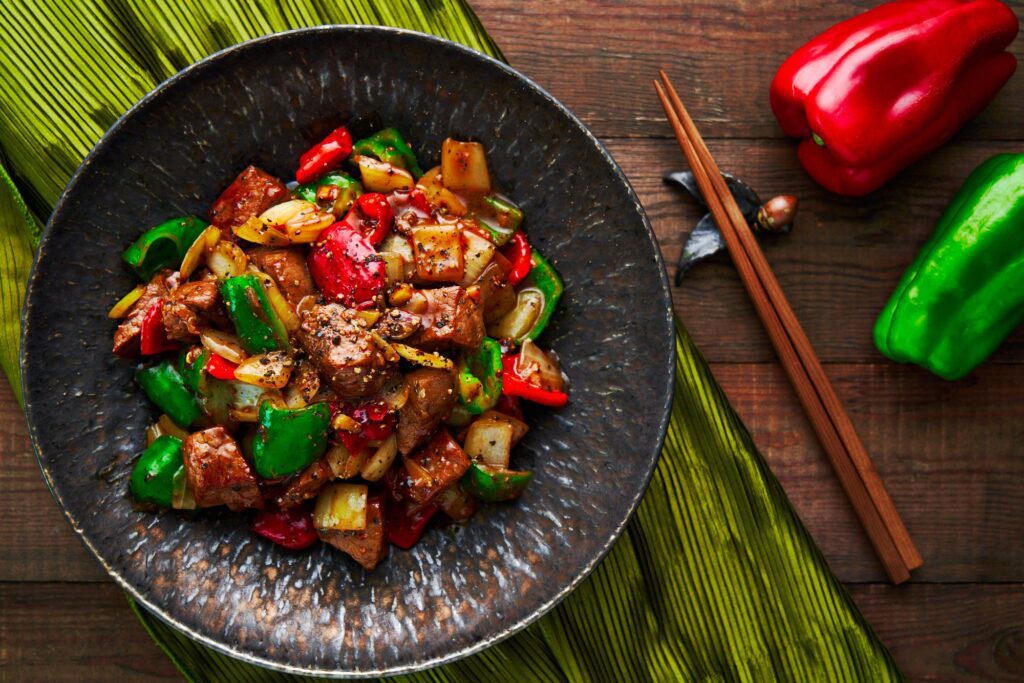While salt and pepper are must-have seasonings in every kitchen, there are many other herbs, spices, and condiments worth exploring. Garlic, ginger, cumin, turmeric, and paprika are flavorful and have nutritional benefits. Garlic has been linked to reducing blood pressure and cholesterol levels, while ginger promotes digestion and eases nausea. Cumin is rich in antioxidants and improves digestion, and turmeric has powerful anti-inflammatory and antioxidant properties. Paprika is a good source of antioxidants, and soy sauce contains essential amino acids and improves bone health. By incorporating these seasonings into your cooking routine, you can create delicious and healthy meals.
Going Beyond Salt and Pepper: Essential Seasonings for Every Dish
Introduction
When it comes to seasoning our food, most of us often rely on salt and pepper. While these staples are a must in every kitchen, they’re not the only seasonings available. There are many other herbs, spices, and condiments that can take our dishes to the next level in terms of flavor and nutritional value. In this article, we’ll explore the essential seasonings that every cook should have on hand.
Garlic
Garlic is a versatile seasoning that’s used in countless dishes worldwide, from soups to stir-fries. Not only does it add a pungent, savory flavor, but it’s also loaded with beneficial nutrients, including vitamins B6 and C, manganese, and selenium. Garlic has also been linked to several health benefits, such as reducing blood pressure and cholesterol levels and boosting immunity. To use garlic, chop, crush, or mince the cloves and add them to your dish during the cooking process.
Ginger
Ginger is another versatile seasoning that’s a staple in many Asian cuisines. Its unique flavor adds zing to soups, stir-fries, marinades, and teas. Ginger is also known for its anti-inflammatory properties and can help ease nausea and digestion issues. It contains gingerol, a bioactive compound that has been linked to reducing muscle pain and soreness. To use ginger, peel and grate it, then add it to your dish during cooking or steep it in hot water to make tea.
Cumin
Cumin is a warm, earthy spice that’s a staple in Mexican and Indian cuisines. It adds depth to chili, curries, and tacos, and is also used to flavor rice and lentil dishes. Cumin is rich in antioxidants and has been linked to improving digestion and reducing inflammation. To use cumin, toast the seeds in a dry pan until fragrant, then grind them into a powder using a spice grinder or mortar and pestle.
Turmeric
Turmeric is a bright yellow spice that’s commonly used in Indian and Middle Eastern cuisines. It adds a warm, bitter flavor to curries, soups, and rice dishes. Turmeric contains a compound called curcumin, which has powerful anti-inflammatory and antioxidant properties. It has also been linked to reducing the risk of several chronic diseases, including cancer, Alzheimer’s, and heart disease. To use turmeric, add the powdered spice to your dish during cooking.
Paprika
Paprika is a bright red spice made from ground peppers. It’s commonly used in Spanish, Hungarian, and Mexican cuisines and adds a sweet, smoky flavor to dishes. Paprika is rich in antioxidants and has been linked to improving digestion, reducing inflammation, and promoting healthy skin. To use paprika, sprinkle it on your dish as a finishing spice.
Soy Sauce
Soy sauce is a salty, savory condiment that’s a staple in Asian cuisine. It’s made from fermented soybeans and wheat and is used to flavor meats, vegetables, and rice dishes. Soy sauce is a good source of protein and contains essential amino acids. It has also been linked to reducing the risk of heart disease and improving bone health. To use soy sauce, drizzle it over your cooked dish or use it as a marinade.
Conclusion
Salt and pepper are important seasonings, but they’re not the only ones available. The above seasonings can take your dishes to new heights in terms of flavor, aroma, and nutritional value. By incorporating these seasonings into your regular cooking routine, you’ll be able to create delicious and healthy meals that your family and friends will love.
